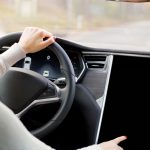As robotics becomes increasingly embedded in daily life, leading researchers gathered at the IEEE International Conference on Robotics and Automation (ICRA) to discuss how robots can better navigate real-world unpredictability. The event, moderated by Ken Goldberg of UC Berkeley, centered around a pivotal question regarding the balance between data-driven tactics and model-based programming for robotics. Importantly, the debate revealed how technological and philosophical divides are shaping the trajectory of robotic research, with participants highlighting both the promise and the risks depending on which methodology takes precedence. Contrasting viewpoints emerged as panelists drew from their extensive work on collaborative robots, manipulation tasks, and safety-critical automation, offering insights into the practicalities and theory underpinning robot intelligence. This level of direct confrontation and reasoned argument is rare in a field often fragmented by specialization, adding contemporary depth to an ongoing global conversation.
Coverage of similar debates over the years demonstrates that this topic remains unsettled in core robotics circles. Earlier discussions routinely referenced deep learning breakthroughs mainly in perception and language, with less emphasis on combining learned behaviors and formal safety constraints. Recent advancements see larger datasets in manipulation and efforts to systematize the empirical approach, but concerns persist regarding the brittleness and reliability of data-only solutions. The most recent discussions reveal a maturing perspective that emphasizes the integrated utility of empirical data and engineered models, presenting more nuanced, hybrid approaches than in past dialogue.
What Drives Real-World Robotic Performance?
Daniela Rus and Russ Tedrake made the case for the necessity of large-scale data to equip robots with resilience in the unstructured environments that define daily life. Rus’s Distributed Robotics Lab at MIT CSAIL has focused on capturing massive multimodal datasets of human activities to train AI for tasks ranging from cooking to object handoffs. She explained that controlled physical models struggle to cope with environmental inconsistency:
“Physics gives us clean models for controlled environments, but the moment we step outside, those assumptions collapse,”
Rus stated. The strategy entails fitting volunteers with sensors that track not only movements but also less obvious parameters like eye gaze and fingertip pressure, moving beyond imitation to foster adaptability in unpredictable conditions.
How Does Scaling Data Shape Manipulation?
For Russ Tedrake, increasing dataset diversity leads robots to develop robust recovery strategies, similar to how language models improve with more training examples. Demonstrations such as adaptive fruit slicing by robots show that, as data volume rises, previously rare but critical situations are captured and learned—thereby reducing reliance on explicit programming for error handling.
“Robots are now developing what looks like common sense for dexterous tasks,”
Tedrake commented, emphasizing the ability to navigate variable outcomes through experiential learning. As robots encounter ever more diverse scenarios, emergent behaviors arise that reflect a kind of learned intuition about physical interaction.
Can Models and Data Work Together for Safer Automation?
Leslie Kaelbling, Aude Billard, and Frank Park advocated for the continued importance of theoretical models alongside empirical observation. They highlighted prerequisites for safety and reliability, especially when addressing high variability and limited real-world datasets. Mathematical frameworks drawn from physics and biology, they argued, embed critical inductive biases that pure data-driven routines may not capture fully. Kaelbling underscored that data shows surface-level patterns, but models imbue systems with a conceptual foundation essential for safety and edge-case coverage. Meanwhile, Animesh Garg and others proposed a hybrid methodology, suggesting robust performance requires integrating learned behaviors with structural insights enabled by foundational science—an approach already tested in collaborative manipulation studies where data alone proved insufficient.
The debate underscored that the robotics field thrives on its diversity—both in approach and perspective. Incorporating advances from deep learning, manipulation, and sensor fusion, researchers acknowledged that open challenges span the integration of tactile and motion feedback to the generalization of behaviors across new, unseen environments. Rus pointed to the necessity of broad datasets across platforms, while Tedrake stressed that lasting solutions may span decades of incremental progress that leverages both deep learning and traditional control theory, recognizing
“Solving robotics is a long-term agenda. It may take decades. But the debate itself is healthy.”
Looking at the overall discussion, the tension between data and models reflects broader shifts in automation, particularly as robots move from controlled settings to everyday spaces such as homes and hospitals. The convergence of empirical data collection through human action recording, coupled with the application of theoretical frameworks from biology and physics, exemplifies where robotic intelligence research is heading. For practitioners and developers, a takeaway is that hybrid solutions are increasingly favored—leveraging the scalability of collected data matched with the reliability and interpretability of formal models. As robot deployment scales globally, an informed balance between learning from experience and engineering for predictability may reduce the risks of brittleness while expanding the capabilities of automated systems. For those designing and implementing future automation, prioritizing adaptable architectures that draw on strengths from both sides could provide more resilience and effective outcomes in complex, safety-critical roles.










